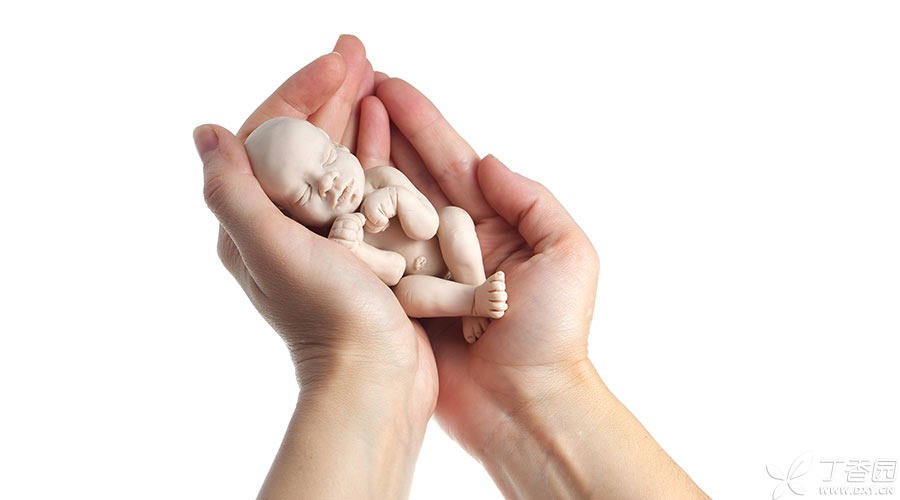
In the last article, we talked about the risks of cesarean section. After cesarean section, I left a scar on my stomach and a scar on my uterus. The next time I get pregnant again, what if the scar does not grow well and the uterus breaks?
Such worries are not without reason. In fact, before the 1970s, the recognized view in the medical field was also [once cesarean section is performed, cesarean section will always be performed]. However, with the continuous accumulation of medical data, doctors found that even if cesarean section was performed before, when pregnancy occurred again, uterine rupture would not necessarily occur, and even many people successfully gave birth smoothly.
What is the success rate of giving birth again?
According to a large number of foreign experience, vaginal delivery after cesarean section, the chance of uterine rupture is not as big as imagined. If the parturient is selected to a certain extent, good pregnancy management is carried out, and the delivery period is properly handled, the risk of uterine rupture is less than 1%.
Of course, just like normal parturient vaginal delivery may not be able to give birth, parturient who have undergone cesarean section can not all succeed in vaginal delivery again. Plus the risk of uterine rupture, the success rate abroad is about 60% ~ 80%.
However, if all the conditions are met, even if the last cesarean section was performed, 80% of them will be able to give birth by themselves this time.
However, it has been repeatedly stressed here that although vaginal delivery can be carried out after cesarean section, not everyone can do it, and some factors should be considered.
Factors Needing Key Considerations in Choosing Natural Production
1. The operation method of the previous cesarean section
If the previous cesarean section was performed in the lower segment of the uterus and was performed through a transverse incision, the chance of uterine rupture is minimal. [Transverse incision] here refers to an incision in the uterus, not an incision in the belly that you can see yourself.
On the belly, no matter transverse or longitudinal incision, it has no effect on the next vaginal delivery.
At present, the routine cesarean section is basically a transverse incision, but it does not rule out that doctors may choose other incisions under special circumstances. If it is other incisions, the risk of uterine rupture is much greater. In addition, when suturing the uterine incision, the risk of suturing two layers is smaller than that of suturing only one layer of rupture.
Therefore, before preparing vaginal delivery, the doctor will ask you in detail about the situation of the last cesarean section incision. However, due to the gap between regions of China’s current medical level is too large, and the degree of information sharing is poor, so sometimes it is difficult for doctors to obtain ideal relevant information, which has also become a problem restricting vaginal delivery after cesarean section in China.
Under normal circumstances, if cesarean section is performed in a regular large hospital, these requirements can usually be met.
2. Interval between the previous cesarean section and the second pregnancy

Ideally, the interval between the two deliveries is at least 18 months. If the interval is too short, it does not mean that the pregnancy cannot continue, but the risk of uterine rupture in vaginal delivery is relatively high.
Of course, the longer the interval is, the better. We, members of the Royal Production Guard, have done a study that found that if the interval exceeds 13 years, the risk of accidents increases significantly, which may be related to scar aging and lack of elasticity.
Therefore, it is best to control the interval between 18 months and 8 ~ 10 years.
3. Reasons for previous cesarean section
If the previous cesarean section was due to one’s own request, abnormal fetal position or fetal distress, and the pregnancy did not happen again, then the chance of uterine rupture during vaginal delivery is relatively small. However, if the previous cesarean section was due to a narrow pelvis, vaginal delivery is not recommended for this delivery.
From 2007 to 2008, the World Health Organization investigated more than 10,000 cesarean section parturients in 21 hospitals in China, and found that the first reason for cesarean section was that the mother requested surgery, accounting for 37%.
More than 30% of domestic women’s first cesarean section may be required by themselves, so when giving birth to the second child, they can try vaginal delivery as long as they can adjust their mentality and make sufficient psychological preparations.
4. Estimation of fetal weight
If it is estimated that the fetus is lighter this time or is not full term, the risk of uterine rupture is small. However, if the fetus is estimated to be large or the pregnant woman has diabetes, the risk of uterine rupture may be increased.
Therefore, if you want vaginal delivery, you should not make a temporary decision at the time of delivery, but should start to carry out good healthy diet management and control your weight from the time of pregnancy.
5. Have you had any previous experience of vaginal delivery
In addition to receiving cesarean section, if there has been vaginal delivery experience, the success rate can be increased by 5 ~ 7 times. However, because of China’s family planning policy, this situation should be relatively rare.
6. Initiation of childbirth

If we want to try vaginal delivery, we hope that the delivery will be started naturally, not induced by drugs. Statistics show that if the scar uterus exceeds the expected date of delivery and is not yet in labor, the success rate of vaginal delivery will be greatly reduced.
In fact, whether the final success of vaginal delivery depends on luck. Even if the whole pregnancy is well managed, I am confident to wait until the end, and I may still not be able to start it myself after the expected date of delivery. I’m afraid I have to do another operation.
After cesarean section, the normal delivery should be considered carefully.
Finally, it should be emphasized that vaginal delivery after cesarean section has a certain risk of uterine rupture after all. Although this probability is not as high as imagined, it is 100% for individuals. Once it happens, it is both urgent and dangerous, and it is a huge test for obstetrics, neonatology and anesthesia.
Therefore, if the lying-in woman wants to try, she should seek detailed consultation from a doctor, be prepared for the most serious consequences, and choose a large hospital with emergency capability and ability to deal with the emergency of uterine rupture.
Responsible Editor: Yidan
